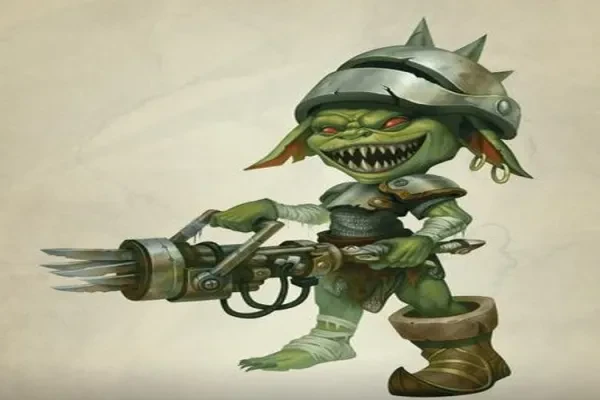
Pathfinder: 15 Best Advanced WeaponsThere are many weapons in the Pathfinder games. Many will stick to the standard weapons like swords and axes. But for people who want some roleplay flavor or to challenge themselves by making an un-optimized character, here are some advanced weapons.
15. Karambit
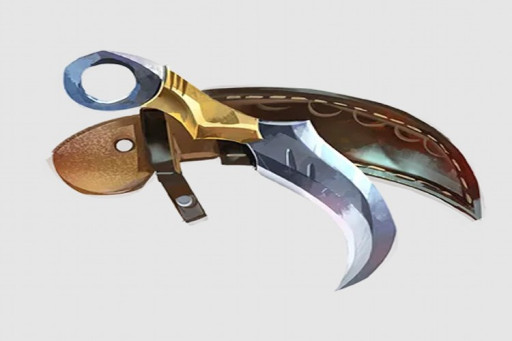
The karambit is a favored weapon in Tian-Xia. While often used by ninjas, rogues and assassins can also get some use out of it. Though not the strongest weapon in a heated situation, they’re helpful when you want to get the drop on someone.
Rogues often end up playing the diplomat characters. A role that would be complicated if they have visible weapons. Knives like karambits are easily concealed. This can also allow a rogue to get in a sneak attack to start a combat.
It’s best used as a concealed alternative weapon. Knives are not quite as good as short swords or rapiers. That said, the karambit has the versatile trait which can be good for enemies with slashing or piercing resistance.
The karambit is good for rogues because:
- The karambit is easily concealed. This is good for diplomatic situations.
- If you play a rogue or a ninja who likes to conceal weapons and turn conversations into combats, this is a good choice. If you have a high stealth stat, the NPC might not notice.
- The Finesse trait uses the Dexterity stat instead of strength to hit. This is good for rogues and classes with high dexterity.
You can get the weapon easily if you have Tian Ancestry. Otherwise, you’ll have to go to a larger city that will have rare weapons dealers.
Karambit stats:
- Price 2 gp;
- Damage 1d4 P;
- Bulk L
- Hands 1
- Category Advanced
- Group Knife
14. Chain Sword
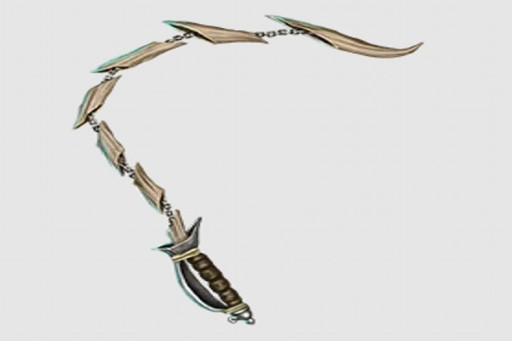
As far as looking cool goes, you don’t get much cooler than a sword that can break off into segments. Favored by soldiers and duelists in Nirmathas and Molthune, this weapon has some traits that make it more helpful than a regular sword. It can be a great weapon for fighters.
The chain sword is a good weapon for fighters because it augments their attack of opportunity feat. It has the reach ability which extends the wielder’s reach to 10 feet. This means the fighter has a greater ability to use his attack of opportunity. And it restricts the movement of monsters.
It can be used as a primary weapon of fighters who like taking attacks of opportunity. If the fighter frequently gets into flanking with rogues. The increased reach makes it easier to establish flanking positions.
The chain sword is good for fighters because:
- The chain sword can be used for more attacks of opportunity. Reach lets it cover more ground
- The chain sword is good for fighters who are more defensive. Some fighters like to play defense and it might be good to use a reach weapon.
- Their sweep ability makes chain swords good for fighting multiple opponents. It gives a player a bonus for attacking multiple opponents.
If you are in the areas this weapon is from, or fighting someone from this area, you can find this weapon easily. Otherwise, you’ll be looking for it in a rare weapon shop.
Chain sword stats:
- Price 6 gp;
- Damage 1d6 S;
- Bulk 1
- Hands 1
- Category Advanced
- Group Sword
13. Feng Huo Lun
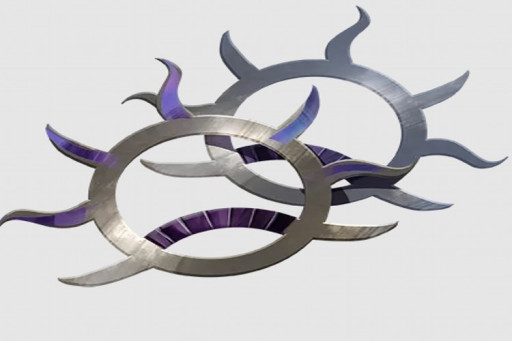
An advanced weapon used by monasteries, this weapon is good for fighters that have monk traits. Of course, many home-brew GMs might give a monk an advanced weapon trait for monk weapons. For fighters who do want to use monk weapons, there’s a lot here. Particularly for role-players.
The feng huo lun has the ability to disarm opponents. For those characters who don’t like killing sentient creates, this ability might be handy. You could theoretically even use the weapon you steal from somebody if you have a free hand.
Its best uses are when you have to subdue an enemy rather than kill him. Many times, this is easier to do when they’re disarmed. Those who like to roleplay fighters who don’t like killing will also find value in this weapon.
The feng huo lun is good for defensive fighters because:
- This weapon can disarm opponents. This makes it a good defensive weapon since enemies who aren’t trained in unarmed combat aren’t as effective.
- If you’re trained in the enemy’s weapon, you can use it if you have a free hand. This makes the Feng Huo Lun ideal if you want to turn someone’s magic weapon against them.
- The feng huo lun is a good defensive weapon. It’ll let you add +1 to your armor class.
You’ll need to look in monasteries or rare item shops to find this weapon.
Feng huo lun stats:- Price 2 gp;
- Damage 1d4 S;
- Bulk L
- Hands 1
- Category Advanced
- Group Knife
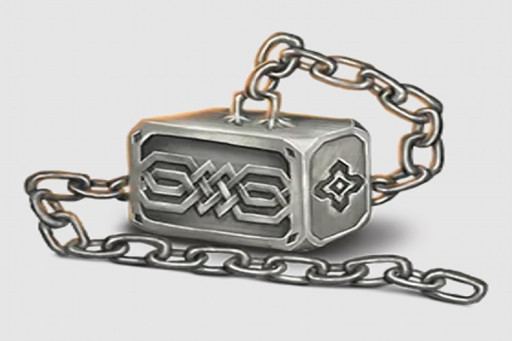
Dwarves have access to a variety of weapons. Unlike humans who have to take multiple feats to get advanced weapons, dwarves only need to take dwarven weapon familiarity. With this in mind, a dwarf who has this feat gets access to some cool weapons.
The dorn-dergar has great capabilities for barbarians and fighters. The reach ability makes attacks of opportunity easier. One other notable ability is the razing ability. It can take on inanimate objects.
Its best uses are against inanimate creatures like animated statues. It’s also good at smashing shields. So enemies that rely on heavy armor are vulnerable.
The dwarven dorn-dergar is best used by dwarven fighters because:
- The dorn-dergar has reach. It’s ideal for attacks of opportunity.
- It is good for attacking objects like shields. The razing attribute allows characters to attack inanimate objects.
- In addition to the niche uses, deals a fair amount of damage. A 1d10 base damage before modifiers is significant and helps with object destruction.
Typically you can find these anywhere dwarven weapons are sold or at character creation if you make dwarf.
Dwarven dorn-derger stats:- Price 8 gp;
- Damage 1d10 B;
- Bulk 2
- Hands 2
- Category Advanced
- Group Flail
11. Flying Talon
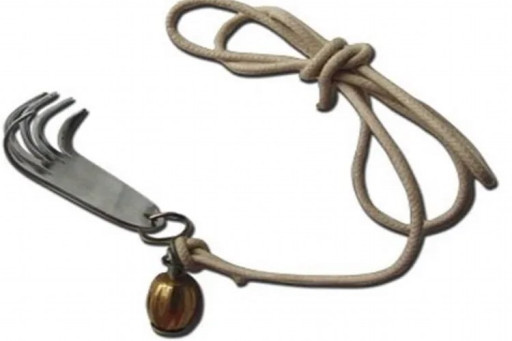
Since kobolds are now a playable race in 2nd Edition, Paizo has taken some effort into introducing Kobold-specific equipment. One weapon is the Flying Talon. This weapon has some handy abilities for rogues aspiring for ninja-like traits.
A Kobold isn’t suited to a front-line fighter position. He’s more of a rogue and the flying talon caters to this. A rogue relies on forcing opponents into disadvantageous positions. The trip attack can knock people prone.
Not only is tripping people good for the rogue, it’s good for the other melee fighters. Use this ability to knock down enemies that are near the fighter to help him. Prone enemies are easier to hit.
The flying talon is good for rogues because:
- The ranged trip ability makes it easy for kobolds to trip an opponent. Sometimes these actions are better used from range.
- Using trip can be easier for rogues than fighters. Rogues tend to have more skill points so getting an athletics check where it needs to be can be easier.
- Since it relies on dexterity modifiers, it’s good for rogues. Rogues have higher dexterity.
In theory, you can obtain this by beating kobolds. However, it’s probably easier to create a kobold character.
Flying talon stats:
- Price 6 gp;
- Damage 1d4 P;
- Bulk 1
- Hands 1
- Category Advanced
- Group Flail
10. Spiral Rapier
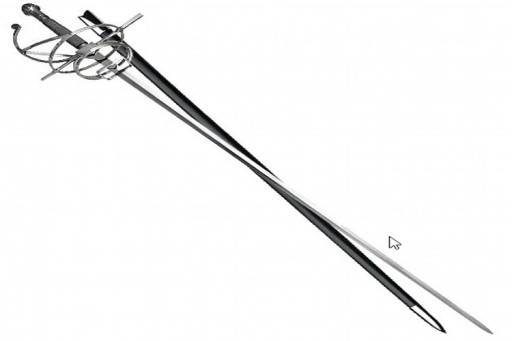
This dueling weapon is used mostly in Taldor. It’s a great defensive and offensive weapon that focuses on parrying. Swashbucklers with many abilities focused on parrying, may find this weapon useful. A rogue can also get use out of it.
Swashbucklers get a decent amount of parrying feats. Most notably, parry and riposte. Swashbucklers use parrying feats often so having a weapon that enhances this capability is good.
Enhancing parrying is one way a swashbuckler can use this. The disarm ability is another thing a swashbuckler can do. Some swashbucklers rely on demoralizing enemies to get more panache points. A GM might give you a bonus to demoralize a disarmed opponent.
The spiral rapier is good for swashbucklers because:
- Swashbucklers use parrying for their best abilities, Having a parrying weapon is ideal.
- The spiral rapier uses the dexterity modifier to attack. This makes it ideal for swashbucklers.
- Players who want to roleplay the classic swashbuckler that does things that are cool but not exactly efficient may find a disarming weapon a good one. Even if the table powergamer would prefer you just did damage, they can’t argue that the enemy losing a weapon isn’t a good result.
Players can find this weapon in Taldor.
Spiral rapier stats:
- Price 5 gp;
- Damage 1d6 P;
- Bulk 1
- Hands 1
- Category Advanced
- Group Sword
9. Sawtooth Saber
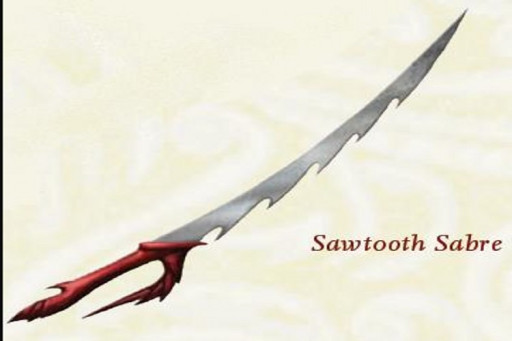
A favored weapon of the Red Mantis Assassins, these twin blades represent them perfectly. They’re efficient yet brutal. To take the Red Mantis Assassin dedication, you need to be trained in them.
This weapon is best used by fighters with a high-dexterity stat or by rogues specializing in two-weapon fighting. The agile trait lets characters attack multiple times with less of a penalty. Using two blades together gives you circumstance bonuses to hit a second time.
Take advantage of the twin feat. While a dexterity fighter could be good with one and a shield, you’re missing out on half its potential. A two-weapon rogue would be better off with two sabers than their traditional off-hand weapons
The saw tooth saber is good for rogues because:
- The saber is great for dual-wielding. It was designed for it.
- If dealing with a lot of Red Mantis Assassins in a scenario, a rogue can improve deception and diplomacy rolls, Most R-d Mantis’ will know something is up if someone is claiming to be one of them without their signature weapon.
- The finesse trait is the rogue’s bread and butter. Rogues have high dexterity.
You can get this weapon if you have the Red Mantis dedication or by killing a Red Mantis member.
Sawtooth saber stats:
- Price 5 gp; Damage 1d6 S;
- Bulk L
- Hands 1
- Category Advanced
- Group Sword
8. Dwarven War Axe
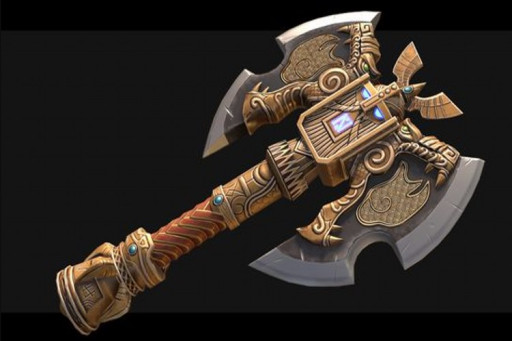
You can’t talk about weapons that are favored by one race without talking about the dwarves and their favorite weapon: The War Axe. Assuming you take Dwarven Weapon Familiarity as a dwarf, this advanced weapon becomes martial for you. This weapon is great for dwarven fighters and barbarians.
While some advanced weapons let you do maneuvers like tripping, the war axe has a more straightforward approach. If you’re using the war axe, your focus is on hitting things really hard. Its main draw is that you can use one hand or two.
Using one hand, you can do 1d8 damage. Using two hands, you can do 1d12. This makes it a good weapon for offensive fighters who like dealing lots of damage or defensive fighters who want to have a shield.
The dwarven war axe is good for fighters and barbarians because:
- The war axe is an ideal advanced weapon for new players who want to play dwarves. There are no advanced maneuvers to figure out. Just point the axe and chop.
- Works for offensive and defensive fighters. Being able to use this with one or two hands allows for versatility.
- If you’re a barbarian, you want a 1d12 weapon. Adding rage to a d12 weapon is devastating.
You can find this weapon at dwarven shops or by creating a dwarf character.
Dwarven War Axe stats
- Price 3 gp;
- Damage 1d8 S;
- Bulk 2
- Hands 1
- Category Advanced
- Group Axe
7. Nodachi
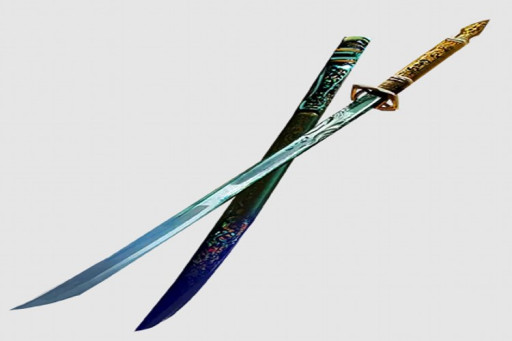
Many of us are anime fans. And many of us have seen a character wield a nodachi even if we didn’t know the name of the sword off the top of our heads. If you ever wanted to wield a nodachi, this is the closest you’ll probably get.
Of course, the nodachi isn’t only used for role-playing a riff of your favorite anime characters. This weapon can be deadly in the hands of fighters. It has a long reach, which is great for enemies that charge or move around a lot. It can do more damage if you brace yourself with a readied action.
Make use of readied actions by using the brace ability. Especially if you’re dealing with creatures that like going invisible. Add more damage dice to upgrade precision damage.
Nodachis are good for fighters because:
- The Nodachi has reach. Meaning it pairs well with fighters with attack of opportunity.
- The brace ability lets you do more damage with each hit dice. This encourages customization.
- Mounted enemies like Hellknights can be vulnerable to nodachis. They like to charge at the party so reach weapons can be effective.
Nodachis can be found at rare weapon shops in large cities.
Nodachi stats:
- Price 6 gp;
- Damage 1d8 S;
- Bulk 2
- Hands 2
- Category Advanced
- Group Sword
6. Flingflenser
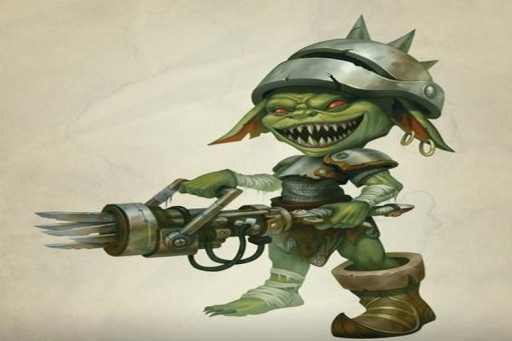
Goblins and explosives rarely mix well together for the goblins. However, just as a million monkeys with typewriters can eventually write a decent novel, a group of goblins can eventually make a viable firearm. Though knowing goblins, probably not without some missing body parts in the process.
Introducing the flingflenser. The flingflenser is essentially a shotgun. This weapon is great for goblin gunslingers. It’s a pretty decent gun that can fit in well for someone who is trying to role-play a goblin without the somewhat suicidal hazards that come with being a goblin. Fighting at a somewhat close range without getting into melee combat allows the goblin role-player to play his role without getting squashed.
As a shotgun, the flingflenser won’t be hitting anything at long range. Your ideal range is within 30 feet. So shoot, move and reload. It also does splash damage to anything within square of the target. This makes the flingflenser an option for swarm battles.
Flingflensers are good for gunslingers, goblins in particular, because:
- The gun is good for mid-ranged combat. Staying within 30 feet allows a goblin character to be within close enough proximity to the action.
- The backstabber ability lets the gunslinger do extra damage to flat-footed opponents. And gunslingers have high initiative. Multiclass with rogue for best results.
- The scatter effect makes this ideal for swarm battles. Swarms have a weakness to splash weapons.
Create a gunslinger from a region that has access to firearms to get this weapon.
Flingflenser stats:
- Price 6 gp;
- Damage
- 1d6 S;
- Bulk 1
- Hands 2;
- Range 30 ft.;
- Reload 1
- Category Advanced
- Group Firearm
- Ammunition Firearm Ammunition (5 rounds)
5. Sickle Saber
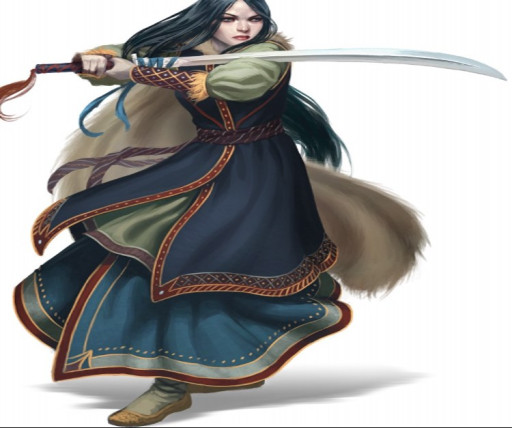
For those who like Bronze Age weaponry, a sickle saber is a good choice of weapon. While it’s not as offensively devastating as other weapons, a cleric who really wants to use advanced weapons can get some mileage out of the sickle sword. Plus, if you’re going for a hyper-religious character, a Bronze Age weapon can be appropriate.
The backswing and forceful abilities mean that each subsequent attack gets a circumstance bonus whether or not the previous one hits. Couple that with traditional cleric buff spells and the cleric can hit a lot. Plus, it’s one-handed so the cleric can use a shield.
The sickle saber does mediocre damage on its own. But a cleric should rarely be the one initiating a melee combat situation anyway (in my opinion). The best way to use this weapon is in an “in case of emergency break glass” situation. If your cleric is being attacked, the sickle saber is helpful to hold the line until the combat-focused party members arrive.
The sickle saber is good for clerics because:
- The sickle saber is good for adding circumstance bonuses, These can stack with buffs like bless or guidance.
- It’s good for role-play purposes. Many religious characters like using Bronze Age weapons.
- Best used as a self-defense weapon. 1d6 is not a lot of damage and a cleric should focus on healing. However, the circumstance bonuses make hitting a target more viable.
You can find this weapon in Irrisean shops or by creating a character from that region.
- Price 5 gp; Damage 1d6 S; Bulk 1
- Hands 1
- Category Advanced
- Group Sword
4. Aldori Dueling Sword
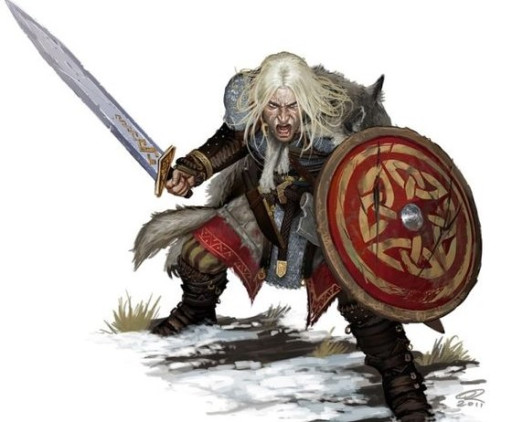
No one likes dueling quite like the Aldori. They will find any reason to duel. And if you want to play an Aldori Duelist, you’ll need the dueling sword.
The Aldori Duelist Archetype relies on an Aldori dueling sword for most of their main feats. Using any other weapon renders those feats useless. Not that this sword doesn’t hold its weight. It does as much damage as a regular sword.
The best way to use this sword is to take the required two feats from the Aldori Duelist dedication. Then you’ll want to go into a class that specializes in finesse weapons like swashbuckler or perhaps a dexterity-based fighter. From there, use it like a regular sword.
The Aldori Dueling Sword is good for Aldori Duelists because:
- The Aldori dueling sword is required to get use out of the archetype’s best feats. The book says explicitly that other weapons do not work.
- The sword functions like any other sword but has finesse capabilities. This allows an Aldori duelist to multiclass into rogue or swashbuckler.
- The parry and riposte abilities are great to have access to if you go into rogue. Disarming an opponent is good but getting an extra attack off during a riposte is even better if you’re flanking.
You can get this item if you’re from the Broken Lands and take the Aldori Duelist dedication.
Aldori Dueling Sword stats
- Price 2 gp;
- Damage 1d8 S;
- Bulk 1
- Hands 1
- Category Advanced
- Group Sword
3. Hook Sword

Fighters who like dual wielding may find some success with the hook swords. It has many offensive and defensive abilities that can help a fighter in many situations. This sword is highly versatile.
Fighters with high athletics skills will like its ability to trip or disarm. Tripping can be especially helpful for fighters. They can lead off with a trip and go into a couple of regular attacks when the enemy is prone. Taking away high-value weapons is also a good choice.
The hook sword shows its value when you have to subdue an enemy rather than kill him. If you can disarm an enemy, he’ll be easier to restrain. Leading off with tripping is another good strategy. A prone opponent is easier to hit and for the most part, using your third action to attack is pointless since the modifier is low.
The hook sword is good for fighters because:
- The disarm ability can take away an opponent’s primary weapon. You could get it yourself on a critical success.
- Tripping is a viable strategy. Using your first action to trip makes it easier for your subsequent attacks to land.
- The parry ability makes it easier to block attacks.
You can find the hook sword in shops that specialize in rare weapons. Particularly in shops near the coasts.
Hook sword stats:
- Price 3 gp;
- Damage 1d6 S;
- Bulk 1
- Hands 1
- Category Advanced
- Group Sword
2. Orc Necksplitter
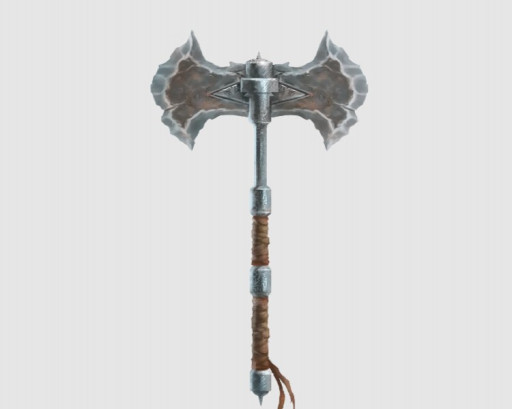
While there are days when the non-lethal option is preferable, for orcs, those days are few and far between. On those days, the orc might prefer the necksplitter. At the very least, the orcs believe in truth in advertising.
The necksplitter is the orc fighter’s signature axe. While the base damage of 1d8 doesn’t stack up to an earthbreaker’s 1d12, it has some extra abilities that can make it handier than a simple hammer. Since it’s one-handed, it lets you use shields.
But combining its forceful and sweep attributes make it handy against multiple opponents. With each hit, you get a circumstance bonus for your next attack. Use it for when you’re surrounded by multiple opponents.
The necksplitter is good for fighters because:
- The necksplitter is good for multiple opponents. Forceful stacks well with sweep.
- As a one-handed weapon, you can use a shield. This makes it a good option for tanks.
- As an orc, an orcish fighter can get this weapon without expending a lot of feats.
You can obtain this weapon by killing an orc or by creating an orcish character.
Necksplitter stats:
- Price 2 gp;
- Damage 1d8 S;
- Bulk 1
- Hands 1
- Category Advanced
- Group Axe
1. Phalanx Piercer
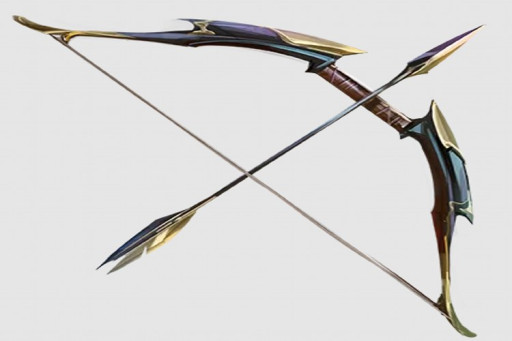
Hobgoblins are the more organized, somewhat saner cousins of goblins. They can hold their own better than goblins. However, ranged options might be better.
For those who want to fight at range, there is the phalanx piercer This bow is especially good for hobgoblin rangers. Not only does it do good damage on its own, its concussive ability lets it ignore resistance or immunity to physical damage. Very handy to have at higher levels.
The key to the phalanx piercer is to not fire if you’re within 30 feet of the monster. You’ll take penalties for that. Otherwise, focus fire on any enemy with physical resistance to back up the mage.
The phalanx piercer is great for rangers because:
- Being a hobgoblin means that using a hobgoblin bow takes up fewer feats. Meaning you can add more ranger or archery abilities.
- Being able to ignore resistances or immunities is good. Especially at higher levels when many things have resistance.
- As far as bows go, 1d10 is pretty good damage for a smaller creature. That’s before you add modifiers.
You can get this weapon if you create a hobgoblin trained in it or kill a hobgoblin.
Phalanx piercer stats:
- Price 10 gp;
- Damage 1d10 P; Bulk 2
- Hands 1+;
- Range 80 ft.;
- Reload 1
- Category Advanced
- Group Bow
- Ammunition Bolts (Phalanx Piercer)
You may also be interested in:
Pathfinder: 15 Boss Monsters For Adventurers To Defeat
Pathfinder: 15 Dungeon Monsters That Make Campaigns More Interesting
Pathfinder: How To Be a Good Game Master
